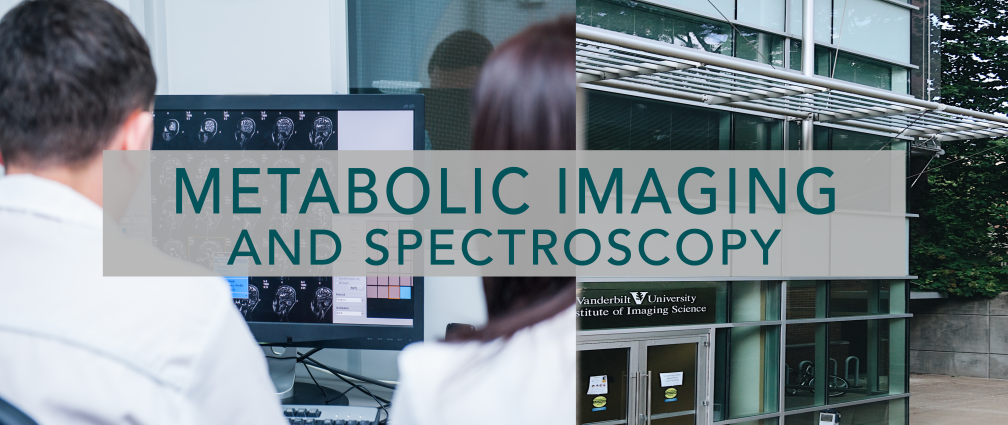Overview
Metabolic imaging and spectroscopy (MIS) refer to the use of non- or minimally invasive imaging and spectroscopy methods to characterize metabolic processes in vivo, as well as the processes that stimulate and support metabolism. MIS research at VUIIS is directed in part toward technical advances: interest areas include novel MRI and MRS techniques, such as pulse sequence development and the use of isotopically enriched tracers to probe metabolic events in vivo. Such tracers often termed biomarkers are utilized in their conventional form as well as using short-lived hyperpolarized metabolic contrast agents; the design, synthesis, and use of contrast agents to measure metabolism and related processes; and understanding physiologically derived contrast in images. Other MIS research at VUIIS is focused on applications in human disease and applied physiology; areas of interest include neurochemistry, cancer, diabetes, and neuromuscular and rheumatic disease.
Capabilities
Metabolic imaging and spectroscopy research at VUIIS is carried out on a wide range of state of the art equipment. Instruments for human studies include one 7 Tesla and two 3 Tesla MRI/MRS systems; near-infrared optical tomography and spectroscopy, suitable for studies of blood volume and oxygenation responses to brain or muscle activation; and PET imaging. Facilities for small animal studies include five MRI/MRS scanners ranging from 4.7 T to 15 T (near future) with multinuclear and in vivo cryoprobe (near future) capabilities; PET and SPECT; X-ray computed tomography; ultrasound; and optical imaging. Hyperpolarized program capabilities include two low-filed MR systems/polarizer, parahydrogen generator and xenon polarizer (under construction in collaboration). Electronic and machine shops in VUIIS support fabrication of novel scanner components. Chemistry lab for production of short-lived hyperpolarized contrast agents for real time metabolic imaging. Computational resources include a cluster in the Institute. In addition, the University’s high performance computing cluster (ACCRE) is available for demanding image simulation and analysis projects.
Current Activities
- Microstructural and metabolic characterization of inflammatory myopathies.
- Assessment of structure-function relationships in muscular dystrophy.
- Assessment of skeletal muscle macro- and micro- vascular function in obesity and diabetes.
- Development of imaging methods for glycogen quantification.
- Development of imaging methods for real time metabolic imaging in vivo
- Design and development of hyperpolarized MR equipment
- Development of metabolic biomarkers in brain cancers and neurological disorders

